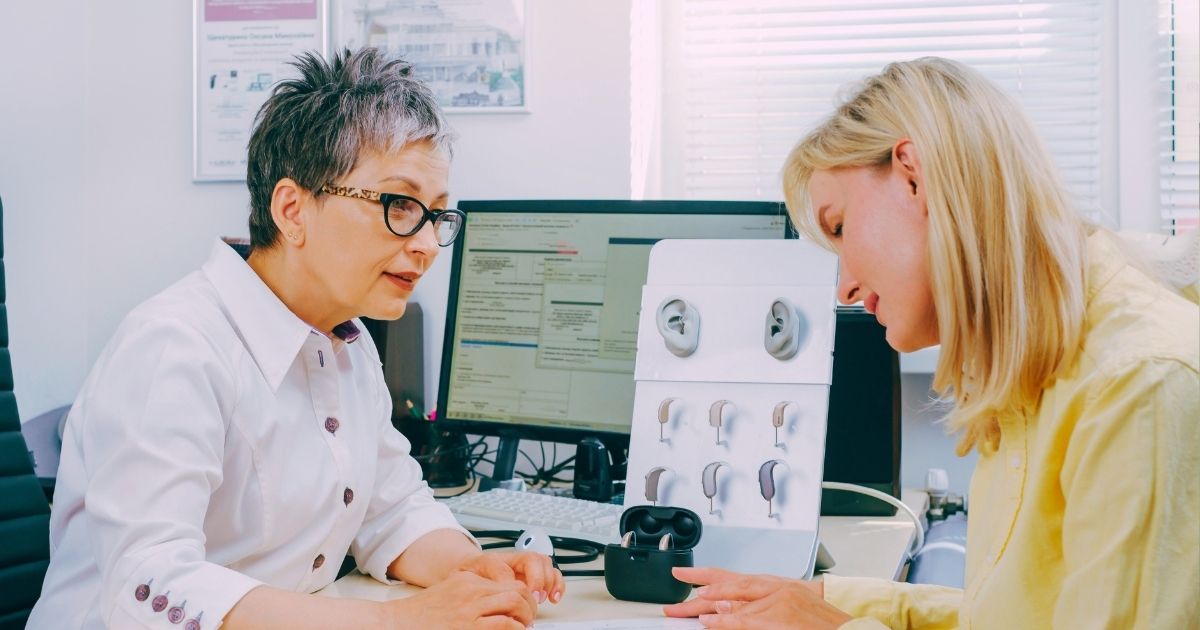by Meagan Lewis, AuD
Change is difficult: it’s uncomfortable and it’s challenging. When you’ve counseled patients about hearing aid pricing in a bundled way for years, it takes practice to feel confident in presenting the itemized options- maybe a bit like patting your head and rubbing your belly.
However, in representing yourself as the expert on hearing healthcare, it is critical to instill confidence in your patient and know of what you are speaking. Otherwise your ability will be questioned by all parties.
New Hearing Aid Pricing Structure: Acting Out the Changes
Prior to seeing our first patients under the new pricing structure, we chose to role play with multiple different scenarios. Let me say that we have some excellent actors on our team which helped to lighten the conversation but also helped to delve deep into some potential pitfalls.
We developed a letter which notified patients that there were changes coming to the pricing structure. Hearing aids would be less costly in order to provide more flexible options for payment to our patients. The letter also described the addition of financing options.
As you might imagine, I got a few phone calls. Surprisingly, there were only a few. One lady called in angry, saying she would not be getting her next set of devices through our clinic. I asked why. She felt that we were “nickel and diming” her. I explained that the process actually lowered the cost of the product and allowed us to fairly charge for the time spent seeing her. As a long-time patient, she didn’t come in all that often, so the new system could save her money over time. She made a consult appointment to investigate new devices.
Leadership and Team Effort
The entire team has to be on board for this model to work. Leadership guides describe all the players that you need on your team: the early adopters, the reluctant person who will help identify problems, the cheerleader etc. We are lucky to have all the players on our team. However, there are some players that may not immediately come to mind.
We have a centralized call center. These folks answer the phones and make appointments for our otologists and audiologists. As the first voice of our program, they are as important as having the audiologists on board. I created scripting and scenarios for them to follow when they received calls for a consult. They also participated in role play with our scheduling coordinator.
Our otologists are also a key piece of the puzzle. At our clinic, we collaborate to promote patient care. We started the conversation with them 2 years ago about patients who had been seen from surrounding areas that maybe didn’t need surgical intervention, but rather evidence based audiologic care to improve their functionality and communication ability. I presented the case for charging for our services, the proposed costs, etc. I am sure that many of you have had similar wide-ranging conversations with your otolaryngology colleagues in which you had an opportunity to educate them about the cost and value of audiologic services. Our conversations ran the gamut, ranging from explanations of the high cost of devices, to whether someone just needed a low cost amplifier, why not just provide an “MD hearing aid”, etc.
It bears reminding those reading this post, as we explained to the otologists and other team members, that with our new pricing, PSAPS and entry level hearing aids are similar in cost, but the hearing aid can be adjusted more easily.
Time for Beta Testing
Clearly, the “alpha phase” of this project was time consuming. And, when I thought we had considered every scenario, a new one popped up. Personally, I wondered how the charge for hearing aid consults was going to be received. I knew that the assessments that we were going to provide were going to drive recommendations, felt strongly that our time was worth what we proposed, but I didn’t know how our clients would perceive it.
This is where we were August 1…stay tuned for more data and case reports.
This is part 3 of the Unbundling series by Dr. Lewis. Click for part 1 and part 2.
Meagan Lewis, AuD is the manager of the audiology department at Wake Forest Baptist Medical Center, a large university and medical school based health care system in North Carolina. Wake Forest, under Meagan’s lead, is an early adopter in breaking away from a ‘bundled “price for hearing instruments. There is much interest in this topic, and Meagan has agreed to share her experiences to date, with periodic updates as the new approach settles in.






